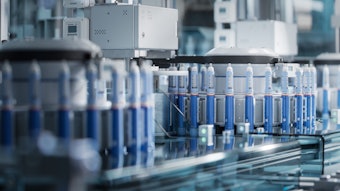
Research on hair regrowth in patients with androgenic alopecia (AGA) has spiked since 2010. Most recently, a group of researchers from Tokyo University of Science in Chiba, Japan, bioengineered hair follicle germs using adult epithelial stem cells and dermal papilla cells replicated in the lab. They then implanted the bioengineered follicles into the back skin of hairless mice. The result was fully functional hair follicles and normal hair growth. (Nature Communications, April 2012).
“This approach is different from the one pioneered by Intercytex several years ago. That technology is now owned by Aderans—a subsidiary of Bosley International—and is currently in clinical trials,” says James A. Harris, MD, a head and neck surgeon whose Denver-based Hair Sciences Center of Colorado is limited to medical and surgical hair restoration. “The premise of the Intercytex model requires a biopsy to obtain hair follicles—say 100 hairs—and the dermal papilla cells are removed and then multiplied into the millions in petri dishes. Surgery is minimal and injection of the cells is minimally invasive. Eventually, I can see the injections being done by robots to get the best pattern of coverage. The beauty of this model is that hundreds of cells can be injected at each site. If only a few survive, the results will still be good. Unfortunately, to date this model has not resulted in a successful method of creating full heads of hair.”
A study in the February 2011 issue of the Journal of Clinical Investigation by George Cotsarelis, MD, and his colleagues at the University of Pennsylvania School of Medicine in Philadelphia compared hair follicles in men with and without AGA. Both had similar numbers of stem cells, but balding men had fewer progenitor cells. The authors concluded that it might be possible to reactivate hair follicle stem cells in individuals with AGA.
In a second study published in the March 2012 issue of Science Translational Medicine, Cotsarelis and his colleagues reported finding elevated levels of prostaglandin D2 synthase (PGD2) in men with AGA. They confirmed that healthy hair follicles treated with increasing amounts of PGD2 start to shrink and eventually stop producing hair, leading to the conclusion that blocking the effects of PGD2—which works by binding to cell receptors, including the GPR44 receptor on hair follicles—could allow hair follicles to reactivate. Two medications well on their way to FDA approval—Merck’s experimental treatment for facial flushing and Actelion’s allergy blocker—both bind to the GPR44 receptor and may inhibit PGD2.
In the September 2011 journal Cell, researchers at Yale University headed by Dr. Valerie Horsley, assistant professor of molecular, cellular and developmental biology, reported that adipose precursor cells—stem cells vital to the creation of new fat cells—also produce platelet-derived growth factors (PDGF), an essential component of hair growth. Injecting PDGF into the skin of defective mice triggered hair growth in 86% of follicles. The researchers also noted that the layer of fat underlying the scalp shrinks with hair loss and expands when hair grows.
Histogen is continuing clinical trials of its injectable Hair Stimulating Complex based on embryonic growth factors and proteins. “Histogen has shown, at least to my eye, that some shrinking follicles seem to turn around and produce hair in the presence of HSC,” says Dr. Harris.
Gene therapy is another avenue of research. “Curis is working on a model using sonic hedgehog, a protein that plays a role in organ development,” explains Dr. Harris. “This approach is probably the furthest away from clinical use. While one gene may assist in turning on hair growth, it can take dozens of others to regulate growth. The growth of a single hair follicle requires contributions from 140 to 150 genes, and we have identified only a handful of them.”
So what innovation is closest to clinical use? “Allergan is studying a form of bimatoprost as a topical to stimulate scalp hair in the same way that Latisse stimulates lash growth,” says Dr. Harris. “It may stimulate functional hair follicles to produce stronger hairs, but we don’t know what, if any, effect it may have on bald spots.”
Linda W. Lewis is contributing editor to MedEsthetics.











